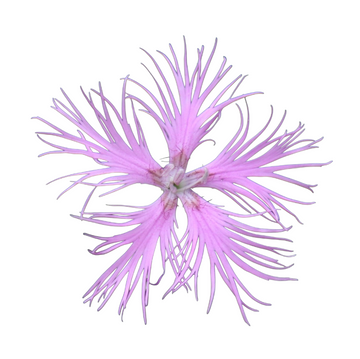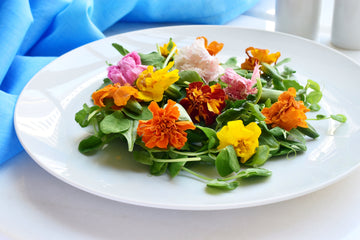Dianthus Superbus

Freshly Harvested

Non-GMO & Natural

Nutrient Dense

Trusted by Chefs
25 Seeds+
🌸 Dianthus superbus Seeds – Perennial Fragrant Flowers
Dianthus superbus
A true perennial beauty with a wild, romantic flair 🌿💖, Dianthus superbus produces finely fringed, lacy petals in shades of pink to lavender 🌸💜. Known for its heady, clove-like fragrance 🌿✨, this hardy perennial has been cherished in European gardens and apothecaries for centuries. Delicate yet resilient, it’s both an ornamental showpiece and a culinary flower prized for its scent + subtle flavor.
👅 Flavor Profile:
Sweetly floral 🍯🌸, with spicy clove-like undertones 🌿 and hints of honey 🍯.
🍴 Culinary Uses:
🧁 Crystallize petals for elegant cake & pastry décor
🍸 Infuse into cocktails, syrups & cordials for fragrant depth
🍵 Brew into teas or floral blends for aromatic notes
🥗 Sprinkle petals sparingly over salads for color + perfume
🍫 Pair with chocolate or custards for a gourmet twist
👨🍳 Chef’s Pitch:
Dianthus superbus is the chef’s perfumed flower 🌸👨🍳✨. Its finely fringed petals and intoxicating fragrance elevate desserts, cocktails, and syrups into sensory experiences. A perennial that delivers romance, heritage, and gourmet versatility, it’s a flower that truly lingers in both scent and memory.
🌱 Growing Notes:
🪴 Hardy perennial, 12–18” tall, clumping habit
🌸 Finely cut, fringed pink-to-lavender blooms with strong fragrance
⏱ Blooms late spring → summer, may rebloom with deadheading
🌞 Prefers full sun, well-drained soil
🐝 Pollinator-friendly + excellent for cottage gardens
✨ Quick Facts:
-
Latin Name: Dianthus superbus
-
Habit: Perennial, clumping, 12–18” tall
-
Flavor: Sweet floral, clove-spiced, honeyed
-
Culinary Uses: Desserts, cocktails, teas, syrups
-
Special Use: Fragrant, lacy perennial edible flower

Dianthus Superbus

Let’s Manifest Beauty.
Edible Flowers that Smile.
Edible flowers are more than just decoration — they’re a chef’s secret for adding elegance, fragrance, and subtle flavor to a dish. From citrusy marigolds to honey-sweet alyssum and tangy begonias, these delicate blooms transform plates into experiences. Each petal offers color, aroma, and taste, turning simple ingredients into a culinary statement.

Flowers are here to stay
The Art of Garnishing with Edible Flowers
A garnish should do more than decorate — it should enhance. Edible flowers bring color, fragrance, and subtle flavor to the plate, turning simple dishes into memorable experiences. From delicate petals scattered across a salad to a single bloom crowning a dessert, flowers add elegance and elevate presentation in ways that engage every sense.
The Secret Ingredient Chefs Trust
Widely used in professional kitchens, microgreens enhance flavor profiles while adding nutrition and a striking visual appeal to everything from sandwiches to fine dining creations.
Frequent Asked Questions
Q: What are Microgreens?
Microgreens are young, tender plants harvested just after the first leaves develop. They’re packed with flavor, color, and nutrients, making them both delicious and healthy.
Q: Are microgreens really more nutritious than regular vegetables?
Yes. Research shows that microgreens can contain up to 40x more vitamins and antioxidants (like A, C, K, and E) compared to their mature counterparts.
Q: How do I use microgreens in my meals?
They’re incredibly versatile—use them as a garnish, in salads, on sandwiches, in wraps, smoothies, soups, or even as a centerpiece ingredient in gourmet dishes.
Q: How long do microgreens stay fresh?
Stored properly in a fridge, microgreens typically last 5–7 days. To keep them at peak freshness, store them dry in a breathable container.











